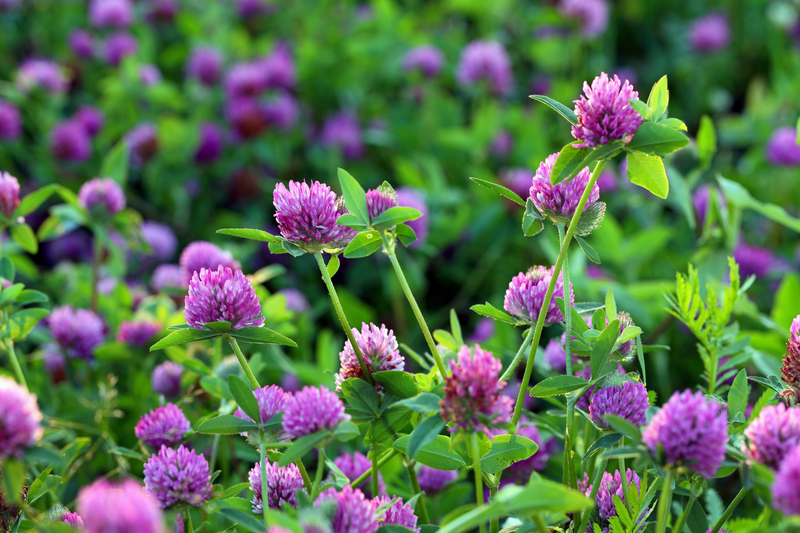Precision Hedge Trimming for Perfect Gardens
Posted on 17/09/2025
Precision Hedge Trimming for Perfect Gardens
Beautiful, healthy gardens often feature carefully maintained hedges that serve as both a visual highlight and a functional border. If you're seeking to achieve that 'perfect garden' look, precision hedge trimming needs to be a key part of your maintenance routine. This comprehensive guide delves into the art, science, and best practices of precision hedge trimming, helping you elevate your outdoor living space to the next level.

Why Precision Hedge Trimming Matters
Hedges provide structure, privacy, and beauty to gardens. Regular and precise cutting not only enhances their appearance but also improves plant health and promotes vigorous growth. Over time, a lack of careful trimming can lead to uneven, overgrown, or unhealthy hedges that diminish the overall aesthetic of your property.
- Curb Appeal: Manicured hedges deliver an immediate boost in visual attractiveness, framing flowers, walkways, and architectural elements.
- Plant Health: Removing diseased or overcrowded branches maximizes sunlight exposure and air circulation, reducing the risk of pests and diseases.
- Functional Design: Well-maintained hedges act as natural windbreaks, privacy screens, and attractive boundaries in both urban and country gardens.
What Is Precision Hedge Trimming?
Precision garden hedge trimming is the meticulous process of shaping, cutting, and maintaining hedges to exacting standards. Unlike rough pruning, precision trimming focuses on creating uniform lines, smooth surfaces, and well-defined shapes--whether you're growing boxwood, privet, yew, or laurel hedges.
Key characteristics of precision hedge trimming:
- Frequent, light trims instead of infrequent, heavy cuts
- Use of sharp, high-quality tools
- Adherence to plant-specific growth patterns
- Attention to symmetry and proportion in garden design
The Benefits of Expert Hedge Shaping
Mastering precision in hedge trimming can dramatically transform a green space, but the advantages go beyond visual guarantees. Let's explore why precisely trimmed hedges outperform their neglected counterparts in every garden:
- Encourages Dense Growth:
- Frequent trimming stimulates the production of more shoots, resulting in lush, dense foliage that better screens and structures your landscape.
- Improved Health:
- Regularly removing unhealthy, dead, or weak branches helps prevent the spread of disease and reduces pest infestation risks.
- Custom Designs:
- From classic straight lines to ornate shapes like spheres, pyramids, or undulating forms, your garden's character is defined by the precision hedge shaping you implement.
- Landscape Harmony:
- Neatly trimmed hedges bring order and cohesion, integrating beds, lawns, and trees into a unified garden vision.
Essential Tools for Precision Hedge Cutting
Achieving sharp, clean lines starts with having the right set of tools. Below is a list of must-have equipment for any gardener committed to accurate hedge trimming:
- Hedge Shears: Manual shears offer control and are ideal for small to medium-sized hedges.
- Powered Hedge Trimmers: Available in electric, cordless, and petrol variants, these make quick work of large or lengthy hedges.
- Secateurs/Pruners: For snipping individual shoots and shaping intricate areas.
- Loppers: Handy for cutting thicker branches that shears or trimmers can't handle.
- String Line and Stakes: To establish perfectly straight edges and reference points.
- Protective Gear: Always wear gloves, safety glasses, and ear protection for larger jobs.
Tool Maintenance Tips
Sharp blades are non-negotiable for clean cuts that minimize plant stress and disease entry. Clean tools after each use and oil the moving parts regularly to extend tool life and improve performance.
When Should You Perform Precise Hedge Trimming?
The frequency and timing of garden hedge maintenance depend largely on the plant species and your desired hedge shape. Here's a helpful breakdown:
- Evergreen Hedges (Boxwood, Yew, Holly):
- Trim in late spring and, if needed, again in late summer.
- Deciduous Hedges (Hornbeam, Beech, Privet):
- Best trimmed in late spring or early summer, after new growth starts.
- Fast-Growing Hedges:
- May require light trimming up to three times per year to maintain crisp lines.
Avoid trimming during extremely hot, dry spells or when frost is likely, as these conditions can stress your plants and diminish their vigor.
Step-By-Step Guide to Precision Trimming
Prepare Your Hedge
Before you begin, inspect the hedge for any signs of disease or pests. Remove any visible debris and set up your string line or stakes if aiming for a straight edge.
Start with the Sides
- Always trim the sides before addressing the top.
- Keep the base slightly wider than the top--this "A-frame" shape ensures sunlight reaches the lower branches, preventing them from becoming bare.
Shape the Top
- Use the string line as a visual guide.
- Maintain gentle, steady movements, and avoid hacking off large sections at once.
Detail and Refine
- Prune small shoots or uneven spots with secateurs.
- Step back frequently to assess symmetry and adjust as needed.
Clean Up Thoroughly
- Rake up cuttings to prevent fungal infections and maintain a tidy appearance.
- Dispose of diseased cuttings away from compost bins.
Advanced Hedge Shaping Techniques
Ready to bring a touch of topiary artistry into your garden? Advanced hedge trimming includes the creation of spheres, spirals, animal shapes, and living sculptures. These shapes require patience, a keen eye, and sometimes wire frameworks or templates to guide initial pruning.
Tips for advanced hedge shaping:
- Start with a simple geometric form.
- Use wire or string templates for outlines.
- Take off small amounts with each session, allowing the plant time to recover and fill in.
- Keep tools sharp for detailed shaping.
Sustainable Practices in Precision Hedge Trimming
Sustainable garden care isn't just about reducing waste--it's about promoting the long-term health and biodiversity of your outdoor space. Follow these eco-friendly tips during your next precise hedge-cutting session:
- Avoid nesting bird season: Check for birds and wildlife before trimming, and pause pruning until chicks have fledged.
- Compost healthy cuttings: Use trimmed foliage to enrich your garden soil.
- Minimize chemical usage: Keep tools and hedges healthy through good practices rather than reliance on chemical fungicides or pesticides.
Common Problems in Garden Hedge Maintenance & How to Solve Them
Even with precise care, hedges can encounter a few challenges. Here's how to address the most frequent issues:
- Bare bottoms: Caused by trimming too narrowly at the base, preventing sunlight from reaching lower branches. Always maintain a wider bottom shape.
- Browning or dieback: From over-trimming or disease. Trim lightly and regularly, and immediately remove infected sections.
- Misshapen lines: Use guides and check your work from multiple angles. Better to cut conservatively--it's easier to remove more than to put it back!
Expert Tips for Perfectly Trimmed Hedges
- Trim in dry, cloudy weather to prevent leaf scorch.
- Use the right tool for each hedge species and size.
- Step back often to check for symmetry and correct mistakes early.
- Sharpen blades before every session for the cleanest cuts.
- Leave cuttings on the hedge briefly to spot-trim any missed areas before cleanup.
- Feed and mulch after heavy trims to encourage healthy regrowth.
Embracing Technology: Electric and Battery Hedge Trimmers
For larger gardens, advancements in battery and electric hedge trimming tools have revolutionized maintenance. These machines are quieter, eco-friendly (especially battery-powered models), and ideal for achieving crisp, uniform results in less time.
Key benefits:
- No fumes or emissions from battery/electric models
- Lighter weight and less vibration = less fatigue
- Consistent blade speed for smoother finish on lengthy hedges
Finishing Touches: Ongoing Care After Trimming
Post-trim care is just as important as the trimming itself. A well-timed feed, deep watering, and mulching help hedges recover, promoting lush new shoots and vibrant leaf color.
- Water deeply if conditions are dry for several days after trimming.
- Apply organic mulch to suppress weeds and hydrate roots.
- Fertilize with a balanced slow-release food after major trims to encourage robust regrowth.

Frequently Asked Questions on Precision Hedge Maintenance
- How often should I perform precision hedge trimming?
- Trim 2-4 times per year, depending on hedge species and growth habit. Frequent, light trims are best for dense, even hedges.
- Can I trim hedges in wet weather?
- Wet conditions may encourage disease transmission; dry, overcast weather is better for trimming.
- What's the best shape for a healthy hedge?
- A wide base with a slightly tapered top allows for full sunlight exposure and promotes dense growth from ground to crown.
Conclusion: Creating a Perfect Garden with Precision Hedge Trimming
In summary, precision hedge trimming is a blend of horticultural science and creative artistry. By investing time in regular, careful maintenance and adopting tested shaping techniques, you can achieve perfectly manicured hedges that elevate your garden's beauty and function year-round. Equip yourself with the right tools, follow sustainable practices, and don't be afraid to experiment with advanced shaping--your garden will reward you with lush foliage and pristine lines admired by all who visit.
Start your journey today, and witness your outdoor space transformed through the art of precision hedge trimming!



